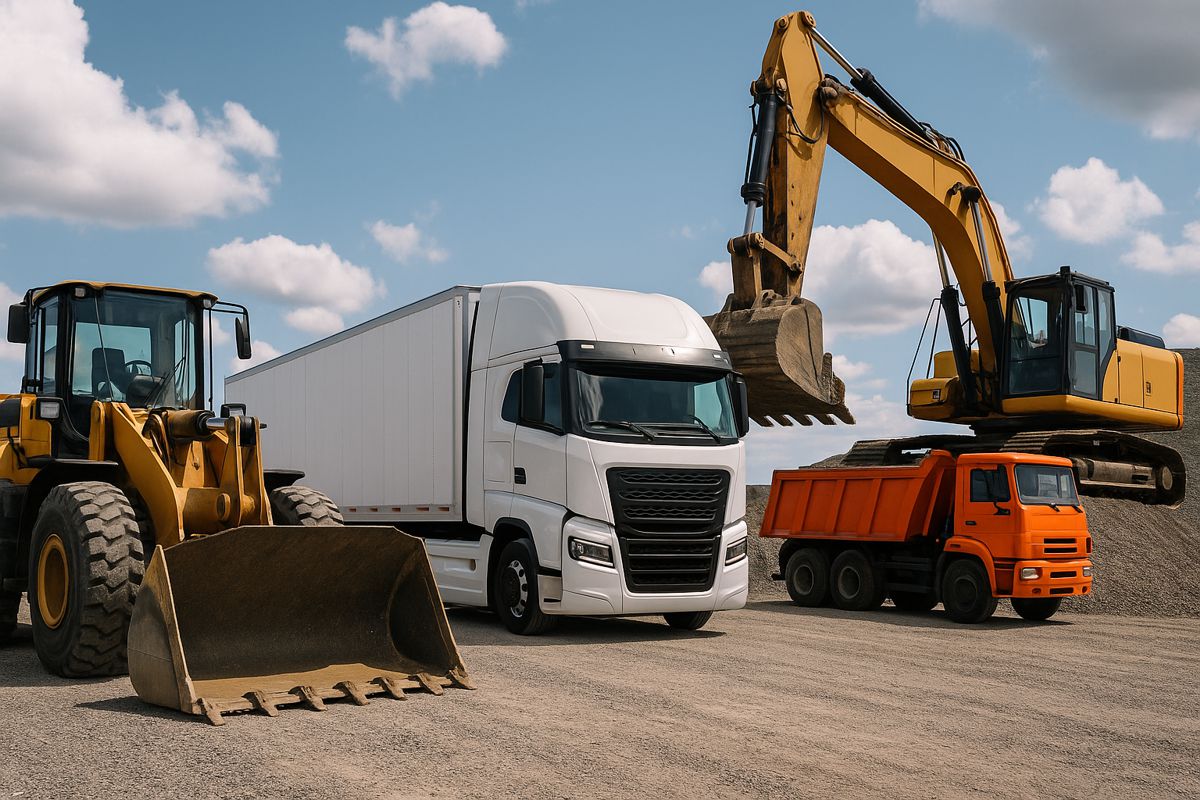Traffic Priority Tech Transforms Fleet Efficiency for Smarter Freight
Freight movement sits at the beating heart of modern economies, yet urban congestion continues to create bottlenecks that drain time, money, and fuel. Applied Information and Geotab have joined forces to tackle this enduring challenge with a smart freight signal priority solution designed to keep commercial vehicles moving smoothly through intersections.
Their collaborative system marries Applied Information’s Glance Smart City Supervisory Platform with the proven capabilities of Geotab GO telematics devices. The result is a practical way for freight fleets, commercial vehicles, and public works teams to secure green-light priority without disrupting wider traffic coordination.
At its core, the technology taps secure telematics data to request extended or early green phases, allowing heavy trucks to maintain a steady speed instead of enduring abrupt stops. With fewer halts and restarts, fleet operators enjoy reduced fuel burn, lower emissions, and time savings that ripple across supply chains.
Bryan Mulligan, President of Applied Information, highlighted the stakes for operators: “Unnecessary stops cost freight operators time, fuel, and money. By combining Geotab’s telematics data with our proven signal priority algorithms, we can give fleets a practical way to keep trucks and deliveries moving efficiently while reducing fuel use, cutting costs, and improving supply chain reliability.”
Real-World Gains in Alabama
These capabilities have already been tested on the ground. The University of Alabama and the Alabama Department of Transportation trialled the system along a 26-intersection freight corridor in Tuscaloosa. Researchers observed travel time reductions of up to 47 percent for participating trucks, with no adverse effect on general traffic flow.
Dr. Alex Hainen, Associate Professor of Civil, Construction and Environmental Engineering, explained the results: “Our goal with connected vehicle technology is to improve traffic signal operations so heavy freight vehicles can clear intersections safely and efficiently. In our deployment, trucks were able to travel the corridor without stopping, avoiding unnecessary acceleration and fuel use. Travel times improved by nearly half compared to baseline conditions while keeping other traffic flowing, and we are excited to see these benefits continue to expand for freight operators and communities.”
Such findings echo broader research in smart mobility. Studies from the US Federal Highway Administration and leading transport analytics bodies have shown that signal priority systems can reduce idling emissions, improve intersection throughput, and enhance road safety outcomes for urban freight.
A Partnership Built on Connected Intelligence
Integrating telematics and roadside infrastructure marks a meaningful step toward connected freight operations. Geotab brings extensive credentials as a global leader in fleet data and AI-driven optimisation.
Louis De Jong, Chief Revenue Officer at Geotab, emphasised the significance of the collaboration: “Our collaboration with Applied Information exemplifies how strategic partnerships can enhance our core offering. By seamlessly integrating their intelligent transportation solutions, we’re providing transportation and Public Works fleets with an even more robust and connected experience.”
With over five million vehicle subscriptions globally and more than 100 billion data points processed daily, Geotab’s technology underpins fleet decision-making for logistics giants, Fortune 500 companies, public-sector fleets, and national government agencies.
Applied Information, meanwhile, has built a reputation for transforming roadside communications and safety. Its Glance platform consolidates traffic devices, communications, and vehicle connectivity into a single interface accessible from desktop or smartphone. Having pioneered IoT-powered school safety systems in 2011, the company continues to expand into connected vehicle applications across urban traffic management.
Freight Signal Priority
Maintaining momentum at junctions might sound simple. Yet for heavy trucks, stop-and-go driving significantly increases fuel consumption, brake wear, emissions, and operational strain.
Key benefits of freight signal priority include:
- Better fuel efficiency for heavy goods vehicles
- Reduced CO₂ and particulate emissions from fewer restarts
- Enhanced road safety through smoother vehicle movements
- Lower operational costs via improved asset performance
- Increased delivery reliability through travel time consistency
- Reduced driver fatigue linked to stop-start conditions
Urban freight demand is rising rapidly, compounded by e-commerce growth and last-mile delivery pressures. Intelligent signal systems offer cities and fleet operators a scalable tool to mitigate congestion impacts without costly road expansions.
Global Perspective and Industry Momentum
Cities worldwide are exploring adaptive signalling and connected vehicle initiatives. European nations have trialled priority systems for logistics corridors, while Asian smart city programmes actively integrate traffic sensors, V2X connectivity, and AI-based control systems.
US agencies, including the Department of Transportation, are prioritising Connected and Autonomous Vehicle readiness through pilot programmes that dovetail with Applied Information’s and Geotab’s efforts. Research funded by ITS America and industry consortia indicates freight signal priority could become a foundational layer for connected logistics networks.
Moreover, sustainability targets are reshaping fleet strategies. For operators under pressure from ESG commitments and low-emission zone compliance, reducing idling and diesel consumption at intersections represents a simple yet powerful lever.
Smarter, Cleaner, Faster
As smart mobility ecosystems mature, freight priority systems will increasingly interact with:
- Vehicle-to-everything (V2X) platforms
- AI-driven predictive traffic management
- Digital twins for city traffic modelling
- Electric and hydrogen fleet optimisation tools
- Autonomous and semi-autonomous logistics vehicles
Industry analysts forecast the global intelligent traffic systems market to surpass USD 60 billion by 2030, driven by rising urbanisation, environmental mandates, and the digitalisation of transport operations.
For municipalities, these solutions offer a chance to enhance goods movement while maintaining community traffic flow. For fleets, the benefits span cost savings, compliance, and reputation as responsible operators.
Building Resilient Supply Chains
Transport disruption carries real economic consequences. With global trade corridors under increasing strain from extreme weather, geopolitical uncertainty, and network capacity limits, incremental improvements in journey consistency can deliver outsized benefits.
Green-light freight priority supports:
- More predictable logistics cycles
- Greater fuel resilience amid volatile markets
- Reduced stress on drivers and assets
- Smoother integration with smart ports and hubs
Smarter urban transport coordination becomes a foundational part of resilient logistics planning.
Embracing Data-driven Optimisation
With proven results in Alabama and rising interest from city authorities and fleet operators, Applied Information and Geotab are helping pave the way toward cleaner, smarter, and faster freight mobility. As cities ramp up digital infrastructure and fleets embrace data-driven optimisation, intelligent signal priority will play a central role in shaping efficient supply chains.
This collaboration underscores a broader truth in modern infrastructure development: innovation thrives at the intersection of digital intelligence and road-level practicality.




















